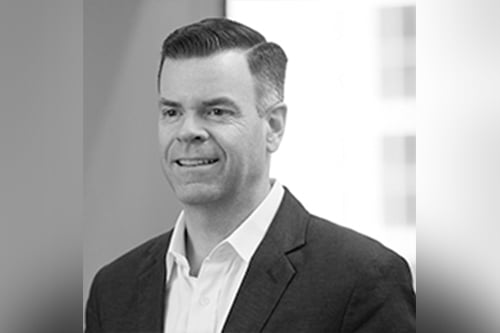

The forecast for the coming year is full of risks. An upward trend in frequency and costs associated with cyber breaches, an evolution in workplace environments and how employees interact with organizations, and the power of social media to bring down institutions are just some of the threats that companies in Canada need to be aware of and prepare for.
“In Canada, we’ve managed ransomware breaches exceeding half a million dollars,” said Phil Baker (pictured), head of Beazley Canada. “We’re seeing workplace environments change [as] employees are holding individuals and companies accountable to unacceptable behaviour and conduct, whether that be perceived or real bad behaviour. We’ve also seen social media have a huge impact, certainly on our politics, but we’re also seeing many companies and individuals get impacted by this in a big way. One ill-conceived tweet can erase hundreds of millions of dollars in a company’s valuation overnight – and companies are struggling with how to manage those types of evolving exposures.”
The era of business driven by data is one of the most significant game-changers for companies as they look ahead, considering the reverberations that big data has on cybersecurity, data protection, and privacy. Unfortunately, data is being used by both companies as well as bad actors who are using it to target their victims.
“But by the same token, when we can get more data from companies on our book of business, it allows us to be more responsive when bad things happen – or even better, before they happen – and then we know what to expect and can advise our clients on that,” explained Baker.
With the mandatory breach notifications now in effect in Canada, in addition to regulatory frameworks developing in other major markets, insurance professionals need to stay on top of those changes, and not just for the benefit of their North American insureds.
“We insure some of the largest global companies, whether they be Canadian or international, so we need to work with them to make sure that they’re aware of multi-jurisdictional issues that they may face because of changing regulatory requirements,” said Baker. “We spend a lot of time and energy really understanding that so that we can advise our clients [and] with the heightened scrutiny that companies and governments now face, I don’t expect the complexity to decrease anytime soon.”
Standards in the workplace have also seen significant shifts as the #MeToo movement and its impacts across many industries continue to make headlines.
“Companies that in the past had bad actors could quietly manage those risks,” explained Baker. “Now with the impact of social media, they just can’t afford to ignore them or try and sweep them under the rug. We work with them to get ahead of that in terms of managing their reputational risk or even better, making sure that they’re addressing these issues before they become a media storm.”
And it’s hard to ignore the other storm brewing – that of global warming and the resulting weather events. The impact on communities is becoming very real, as seen recently in Labrador where climate change has been melting permafrost and raising sea levels to the detriment of local businesses and residents.
“When these kinds of incidents are making the front page, businesses need to ensure that they’re doing what they can to manage that exposure. With social media, they can quickly become a target for anything that they’re doing that might be perceived from an environmental perspective as adding to that,” said the Beazley Canada leader.
The key to managing exposures to these and other risks is to be prepared. For one, companies want to have a reputational risk plan in place so that when the unthinkable does happen, they’re prepared with a process to deal with the fallout – a process that should also include their insurance provider.
“Companies can’t control all aspects of their business, so they need to do their part from a risk management perspective to ensure that there’s reporting channels in place and whistle-blower guidelines so that people that do come across something are comfortable and protected when reporting that to the senior people,” said Baker.
For an insurance perspective, considering how deeply risks are interwoven in the current risk landscape, the days of insuring single risk exposures are also over. A D&O policy, for instance, is not just a D&O policy anymore.
“A D&O policy protects companies and individuals from environmental exposure, reputational risk, a cyber or potential breach,” said Baker. “We need to create policies that address all of those things in a comprehensive way, so as we roll out new products, we’re tying those different types of coverages together.”
